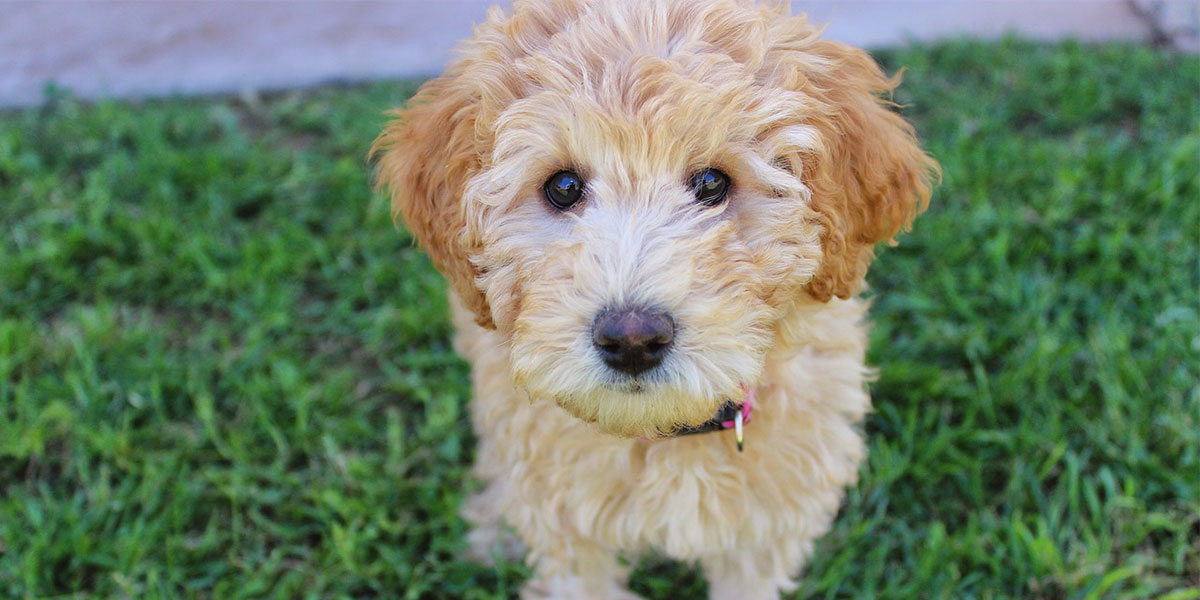Taking too long? Close loading screen.

April 29th
As you’re probably well aware, dogs are extremely social creatures. Being left alone for long (or even short) periods of time can be stressful and boring for your pooch.
Luckily, you can teach your Bernedoodle puppy to enjoy their alone time—or at least put up with it until mommy and daddy get home.
Helping your pup cope with separation anxiety will take a little work, but the payoff is well worth it—well-adjusted dogs are less likely to bark excessively, dig, chew, or develop more serious stress and anxiety disorders as time passes.
Start by getting into the habit of leaving your puppy alone in its crate/playroom for 30-60 minutes every day. Bit by bit, increase the duration up to two hours at a time for puppies younger than 3 months and up to four hours at a time for pups who are 3-6 months old.
This is a process, and it’s meant to teach your dog a very valuable lesson—you will always come back.
Crate training may take months, with most dogs being well-adjusted by the time they’re a year old—although every puppy is different.
Dogs love to eat. Associate the awesomeness of meal time with your dog’s alone time, and he’ll start to view being alone as something to enjoy rather than dread. You can even stuff a toy or two with kibble to give your dog something to occupy himself with as time passes.
Dogs (especially puppies) struggle with ending “play time” and beginning “quiet time.” Teach your dog how to settle down by occasionally interrupting their playtime with quick little breaks.
Associate these breaks with a verbal command like “settle” or “quiet” and ask your pup to lie or sit still for a moment. As always, reward your puppy for good behavior, and then resume play.
When you’re just starting out, these pauses should be very brief, usually just a couple seconds at a time. After your dog can settle down successfully on command, work up to longer rest periods (10-30 seconds).
When your dog realizes that every stretch of boredom and inactivity is followed by fun, they’ll stop stressing out so much when it’s time to take a break.
At first, you shouldn’t be crating your puppy for very long. 30 minutes will seem like an eternity for a dog who’s just learning how to relax in their new den.
Make your puppy’s crate experience more pleasant by giving them some chew toys to play with while you’re gone, and also make sure that all of your dog’s needs—bladder, bowels, water and fun—are met before entering the crate. That means that if your puppy does cry or whine, at least you’ll know he’s just lonely and doesn’t need anything.
That’s all well and good, but what happens when you inevitably run into an issue? Here are some of the most common problems you might face as your dog acclimates to alone time, and what you should do to fix them.
My dog was doing great, but now he cries every time I head out the door.
People are often encouraged by progress, and think their puppy is ready to go from 30-minute stints in their crate to all-day stretches alone. If your puppy starts crying, wait a bit for him or her to stop, and then go check on them. Re-engage your dog with toys or help them settle down, then take a second (much shorter) break from their room.
The next time you begin your dog’s alone-time training, start with a period of time you know your dog can handle, and don’t extend that length for the next several sessions. Once your dog is totally comfortable again, you can start increasing the duration once more.
My Bernedoodle puppy goes berserk when left alone.
Don’t panic—this could very well be a normal reaction for a puppy when left alone. They can turn into a little ball of energy, and the 10 minutes it takes for her to settle down might seem like decades with the constant yelping.
Many puppies will also chew or paw at their crate’s door in an escape attempt, but they’ll usually stop when they discover it’s impossible to get out.
Although these behaviors can be stressful, they’re common when undergoing this kind of training. Stick to the program and before you know it you’ll have a happy, healthy puppy who won’t tear up the house every time you step out the door.
And if you still haven’t found that perfect pooch, head on over to our puppy finder for a peek at some of the cutest, healthiest puppies in the country.
Crying and whining is normal, but how do you know if your dog is suffering from separation anxiety?
Some of the symptoms include:
Separation anxiety can lead to your dog getting seriously injured in an escape attempt, and must be treated as soon as possible.
Ask your vet for help choosing the right course of action—many dog owners have seen success with natural supplements like CBD oil for dogs, which is often preferred by people who are worried about the side affects of giving their dogs prescription medicine.
Find the Perfect Puppy